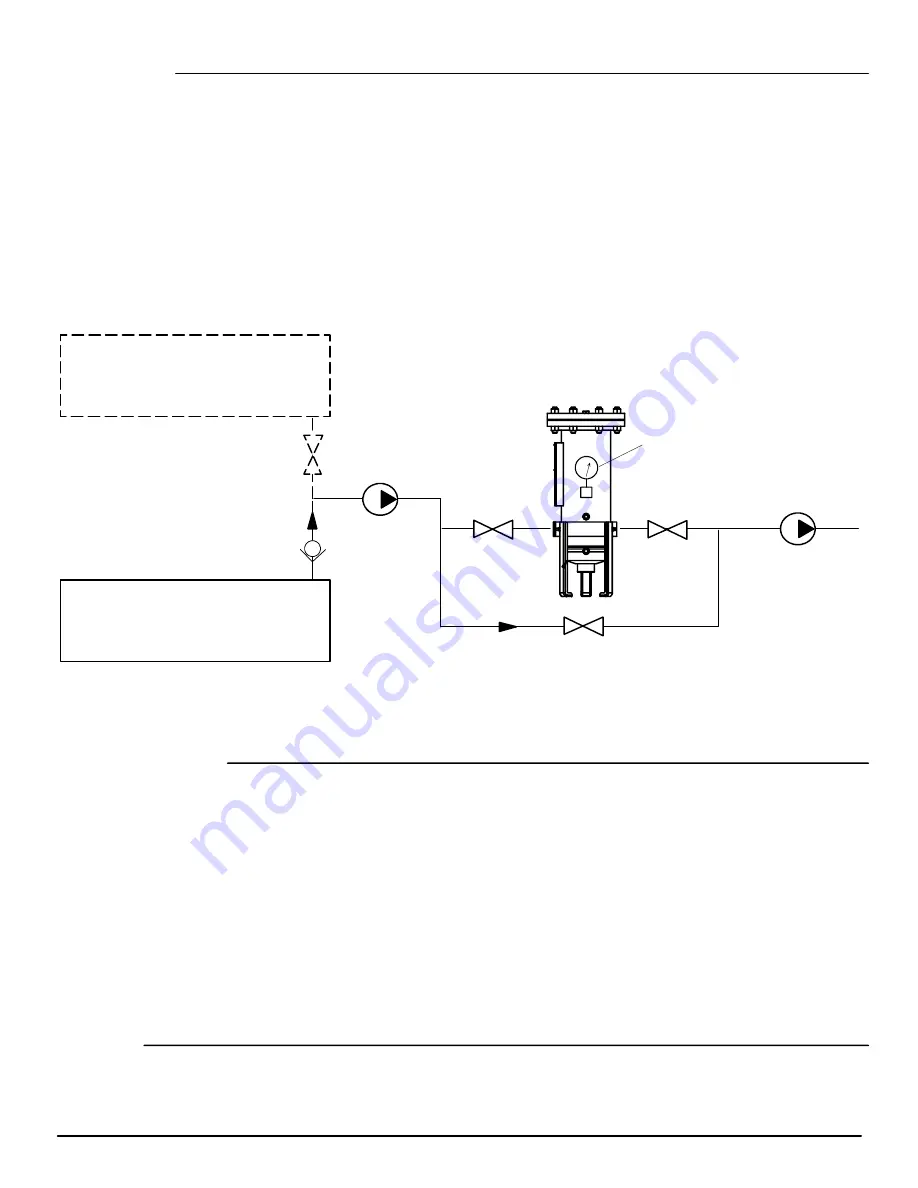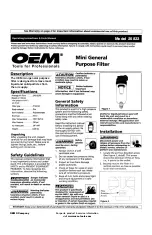
Fuel Pump
(Suction Side lnstallation)
A shut--off valve is recommended when the
fuel tank is mounted higher than the filter.
NOTE:
Maintain enough space above the lid for
element removal clearance (see element
chart for dimensions)
Maintain 8” below the drain.
Inlet
Outlet
Above Ground Fuel Tank
Installation
The BVFS units are designed to be permanently installed. Mount the unit in a location where it will be accessible for service
and element changes. With a single unit installation, it is recommended to install a by--pass system around the unit if
continuous service and element change during operation is required. If required, install an additional by--pass on the pump
to control flow rate through the BVFS. See illustration below.
In the piping consideration, it is important to determine the pressure losses of the piping system. Pressure losses in the piping
system can cause poor filtration efficiency and decreased flow rates. Install the filter in close proximity to the pump. Use 2”
(or larger) diameter pipe and fittings. Always comply with all applicable local plumbing and electrical codes.
Below Ground Fuel Tank
Typical By--pass System
(Consult factory for vacuum side applications).
(Pressure Side lnstallation)
Valve
Valve
By--pass
Valve
Service
Frequency of water draining or element replacement is determined by the contamination level of the fuel.
The BVFS will need a by--pass system installed (see above illustration) in order to service the unit while the pump is running,
otherwise shut the pump off and close applicable valves prior to servicing.
( Optional Fuel
Transfer Pump
Not to exceed
245 PSI)
A check valve is recommended to
enable the system to maintain prime.
Priming the units
1. If the fuel tank is located above the unit (pressure application), open the lid air vent and then open the inlet valve.
Allow the unit to fill using the head pressure. On vacuum applications, remove the top lid and fill with clean fuel.
2. Start the pump and close the air vent when fuel begins to purge (pressure application). Check the fuel system for leaks.
Correct any problems with the pump off and pressure relieved from the housing.
Operation
The BVFS is now in operation. These units are designed to remove liquid and solid contaminants from hydrocarbons. Water
and heavy contaminants will accumulate in the sump. Additionally, the filter elements will progressively become more
restrictive as they remove contaminants from the fuel. This is normal operation and should be anticipated. Servicing frequency
is dependant on the contamination level of the fluid. When reading gauges, note the system pressure and the differential
pressure. Replace the elements before the gauge reads 15 PSI differential.
Optional differential
pressure gauge location






















